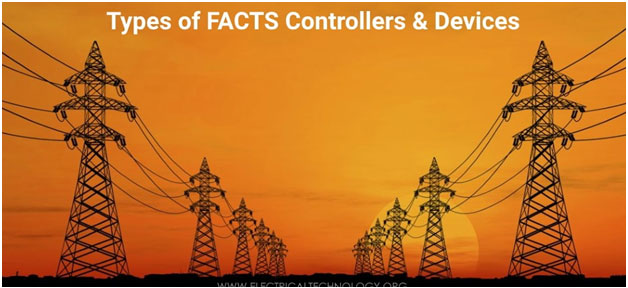According to the type of connection FACTS (Flexible AC Transmission System) Controller with the power system, it is classified as
- Series Connected Controller
- Shunt Connected Controller
- Combined Series-Series Controller
- Combined Shunt-Series Controller
Series Connected Controller
The series controllers are used to introduce voltage in series with the line voltage. It consists of a capacitor or reactor. This type of controller is used to supply as well as consume variable reactive power.
When the load of the transmission line is more, it requires extra reactive power. In this case, with the help of a capacitor, it supplies reactive power. When the transmission line operates on extremely light load, because of less demand of reactive power the receiving end voltage increase than that of sending end voltage. In this condition, it is used to consume reactive power with the help of an inductor.
In most cases, the capacitors are installed at the end of the line to compensate demand for reactive power.
Examples for series controllers are SSSC, TCSC, TSSC, etc.
Shunt Connected Controller
Shunt controllers are connected in shunt with the line to inject current into the system at the point of connection. It consists of a variable capacitor and inductor.
When a capacitor is used to connect parallel with the power system, that method is known as shunt capacitive compensation. When the transmission line consists of a more inductive load, then it operates on a lagging power factor. This method is used to draws current leading to the source voltage with the help of a shunt-connected capacitor to compensate for the lagging load.
When an inductor is used to connect in shunt with the power system, that method is known as shunt inductive compensation. Usually, this method is not useful in the transmission network. But in the case of a very large transmission line, the load is disconnected or it operates on no-load or less load condition, due to the Ferranti effect i.e the receiving end voltage is more than the sending end voltage to avoid such conditions, the shunt inductive compensator is used.
The example of Shunt controllers is SVC (Static VAR compensator) and Static Synchronous Compensator).
Combined Series-Series Controller
These controllers consist of a combination of series controllers with each controller providing series compensation and also transfer real power along the line.
Combined Shunt-Series Controller
These controllers introduce current in series using the series controllers and voltage in shunt using the shunt controllers.
· Example for Combined Shunt-Series Controller is UPFC.
